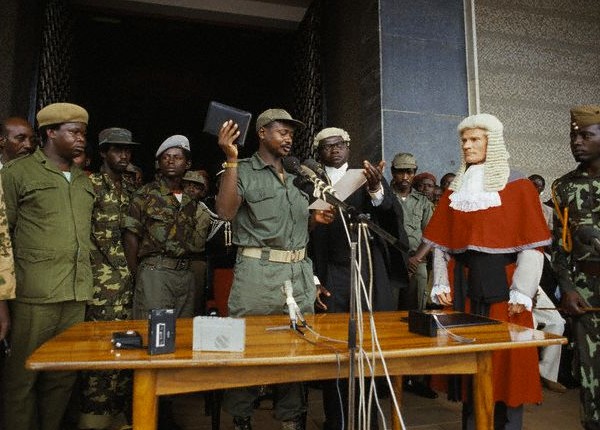By Besi Andrew
On 26th August 2016, 100 or so days after he started his fifth term as president of Uganda, H.E. Yoweri Museveni in an address to the 25th Heads of State and Government meeting of Africa Peer Review Mechanism (APRM) in Kenya’s capital of Nairobi, identified 10 strategic bottlenecks hindering Africa’s march to a modern first world continent.
These, he reasoned, had been identified by the National Resistance Movement, after a careful 50 year study of African public policy vis-a-vis international programs such as ‘Millenium Development Goals – MDGs” that are often drawn by “experts” headquartered in New York, London and Brussels.
He identified these bottlenecks as Ideological disorientation, Interference in private sector, Underdeveloped Infrastructure, Weak states especially the army, police, Fragmented markets – market access and expansion, Lack of Industrialisation and low value addition, Under development of Human resources (lack of education and poor health), under development of Agriculture, Under development of services sector (banking, Insurance, tourism, ICT), and lastly unjustified attack on democracy and governance.
In a little over 2 days from now, at Kololo, H.E. Yoweri Museveni will once again be sworn in for what is his 6th term as president of Uganda and Head of Government. This of course, follows his re-election in our January 14 polls, in which he triumphed over challenger Mr. Kyagulanyi with 60% of the vote.
This new term will be anchored on the National Resistance Movement’s “Securing Your Future” manifesto. This manifesto indeed is a policy guide to solving the “strategic bottlenecks” as identified by president Museveni.
Of course, the disturbances wrought to public policy and social behavior by nSARS-Cov2 viral disease of Covid19 mean that within the mid term, targets to further spur Uganda’s Democratic and economic credence, will be affected.
However, of equal importance in this new term, will be scaled up efforts to further strengthen the full realization of East African Community(EAC) – including resolving of an unfortunate impasse with Kigali.
Reader, as you are aware, trade betwixt Uganda and her EAC neighbors encompasses 146 million consumers.
Over a 10 year period starting in 2001, Uganda’s exports within the EAC grew by 7.2%. This according to a report by Brookings Institute titled “Barriers to Uganda’s Trade within the Regional Trade Blocs of the EAC and COMESA.”
The same report noted, as indeed pointed out by president Museveni, that the “primary barrier to Uganda’s trade with its regional partners is the poor physical infrastructure development in terms of quality, maintenance and connectivity within the region. The railway and road networks linking Uganda to its regional partner states remain in poor condition. Their connectivity also remains limited to EAC and COMESA partners.”
The challenge on stock and quality of our physical infrastructure affecting the efficiency of our producers and traders has been progressively addressed since 2010.
Uganda’s electricity subsector has grown from 400MW in 2000 to 1237.49MW as of October 2020. It will further grow to 1837.49MW by August 2021.
Through Ministry of Information Communication Technology and National Guidance (MoICT&NG)’s National Information Technology Agency (NITA), government of Uganda has been able to develop, install and connect all Ministries, their Departments (MDAs) to the National Data Transmission Backbone Infrastructure (NBI).
In 2008, a 15-year National Transport Master Plan including a Master Plan for Greater Kampala Metropolitan Area (NTMP/GKMA) 2008-23 was established. This is an investment plan covering all transport modes, including roads, railways, civil aviation, inland water transport, urban transport in GKMA and other modes of transport including pipelines and non-motorized transport. The plan was developed with a conceptual expectation that it would serve as a long-term multi-model standard reference framework for transport planning in Uganda.
Of course, without an educated workforce, all interventions come to naught. Since taking power in 1986, the standard of education – including all syllabi – has constantly improved. Primary and Secondary education are free for those who can not afford fees in private schools. University enrollment across all public and private universities is on the up. As is enrollment in vocational institutions.
All these interventions, coupled to growing citizen political awareness through exercising regular free and fair national elections mean that Uganda in the next five years is indeed poised to “Secure her future”.
Indeed, challenges of low wages for critical staff in Medicare, education, civils service AS well as extending electricity to all districts and in all homesteads that need it ranks high among priorities.
Uganda will continue to pursue a diplomatic policy with all her neighbors and with all countries that promotes peace, trade and respect of International best practices betwixt us.
Congratulations Yoweri Museveni. Congratulations Uganda.
The writer is a Ugandan.
